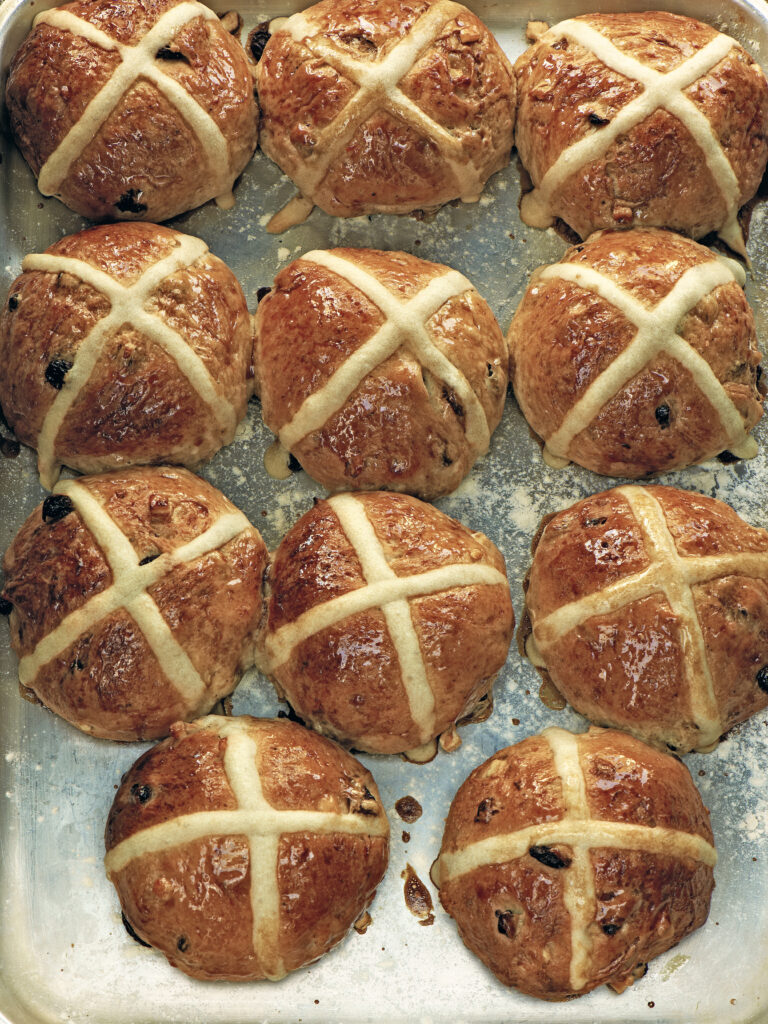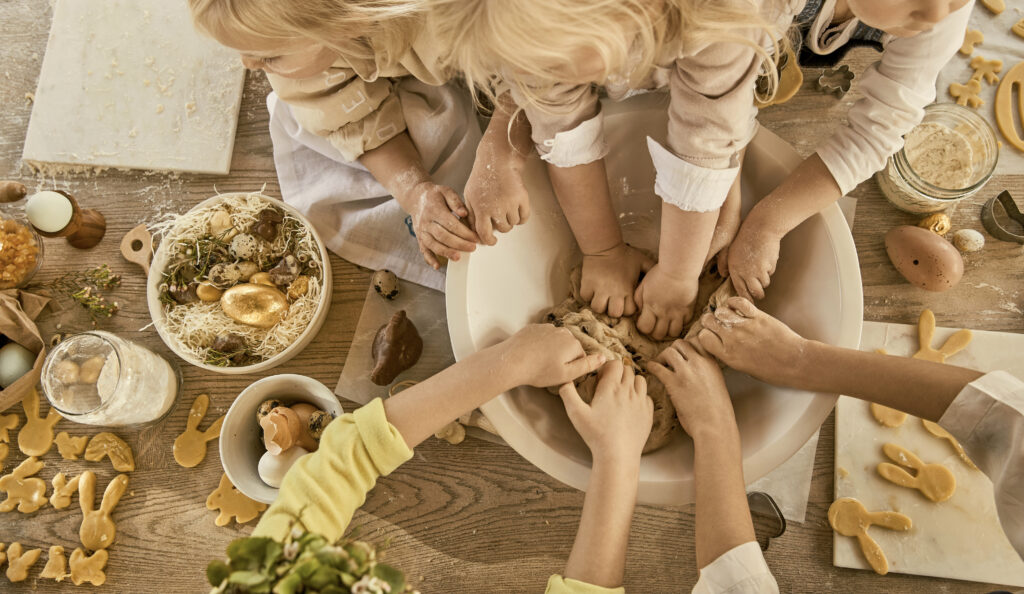
my husband and I will always put on an Easter egg hunt for our grandchildren, and after all that running around we’ll count up everyone’s findings and refuel with some delicious hot cross buns
STORIES · 21.03.22
Events | Food | Recipes
Easter is an important time of year for me – both at home and at Daylesford where there is lots happening over the Easter holidays to celebrate. There are traditional family activities to get involved in during the run-up, including Easter bonnet making and ceramic egg decorating – plus the chance to join us over the Easter weekend to meet our newborn lambs and learn about our organic hens. At home my husband and I will always put on an Easter egg hunt for our grandchildren, and after all that running around we’ll count up everyone’s findings and have some delicious hot cross buns with tea.
This traditional recipe from my book A Love for Food is great fun to make with children – who can help to shape the buns and pipe the white crosses. You just need to make sure you leave enough time to prove the dough to ensure a perfectly light, fluffy bun. This recipe can also be used to make a loaf that is lovely sliced, toasted, and spread with good butter, and a little jam.
Makes 12 buns or 3 small loaves
Ingredients
500g strong white flour
10g fine sea salt
10g fresh yeast or 4g dried yeast
75g butter, softened
25g golden syrup
110g milk
1 tsp mixed spice
2 tsp ground cinnamon
90g currants
70g sultanas
70g mixed peel
1 egg, beaten, for brushing
A little vegetable oil, for greasing the bowl and clingfilm
For the crossing paste:
60g plain flour
15g sunflower oil
For the glaze:
25g sugar
1 tsp liquid malt (available from health stores)
1 tsp lemon juice

this traditional recipe is great fun to make with children – who can help to shape the buns and pipe the white crosses
Line a large baking tray with baking parchment.
To make the dough, sift the flour and salt into a large bowl with the yeast, butter, syrup, milk and 200–220g of lukewarm water. Mix together to form a dough. Turn out on to your work surface and knead for 10 minutes, or until smooth.
Roll the dough out with a rolling pin to about 2cm thick, then sprinkle over the spices, fruit and peel. Knead again until evenly distributed throughout the dough, then form into a ball and put into a large oiled bowl. Cover with oiled clingfilm and leave to rise in a warm place for about 1–2 hours, until doubled in size.
Turn out the dough and ‘de-gas’ by pressing down briefly and gently with the flat of your hand, to even out the bubbles of air, then either shape into a ball and press gently into three 400g loaf tins, or for buns, divide into 12 pieces – for evenly sized rolls, weigh the whole dough, divide by 12 then weigh each piece to that weight.
Form each one into a bun shape and place on the prepared baking tray. Cover with a clean tea towel and leave in a warm place until again until doubled in size, then brush with beaten egg.
Preheat the oven to 210°C/gas 7 for buns, or 200°C/gas 6 for loaves.
While the loaves or buns are proving, make the crossing paste by mixing the flour and oil with 40g water. Put it into a piping bag with a medium, plain nozzle.
To make the glaze, put the sugar, malt and lemon juice into a pan with 25g water and heat, stirring, until boiling, then take off the heat and set aside to cool.
When the loaves or buns have doubled in size, pipe ‘crosses’ on the top of each one (one big cross for the loaves), then put into the oven and bake for about 20–30 minutes, until golden. If you throw some ice cubes into the bottom of the oven, this will create steam and enhance the rising and look of the buns or loaves.
Remove from the oven (turn the loaves out of their tins) and, while still warm, brush the tops with glaze. Leave to cool on a wire rack or two.
